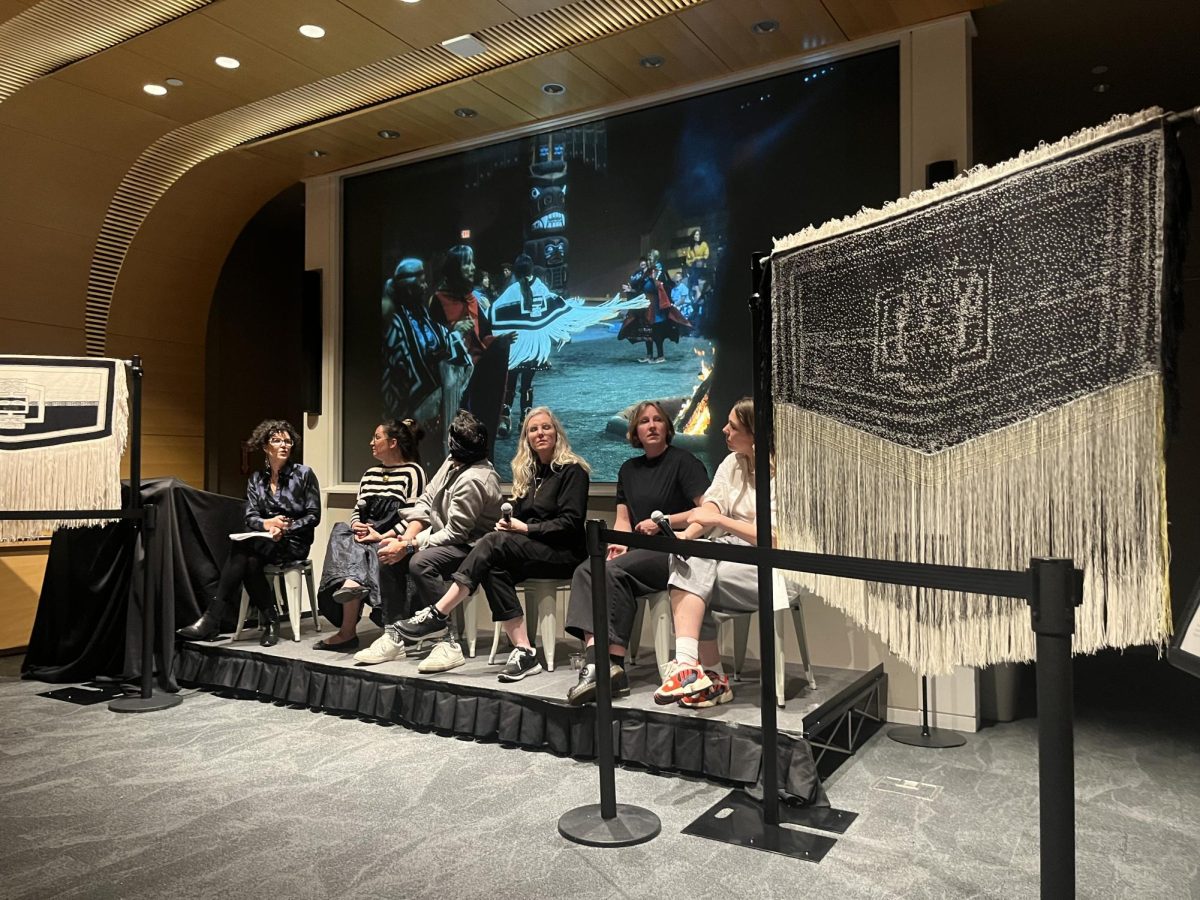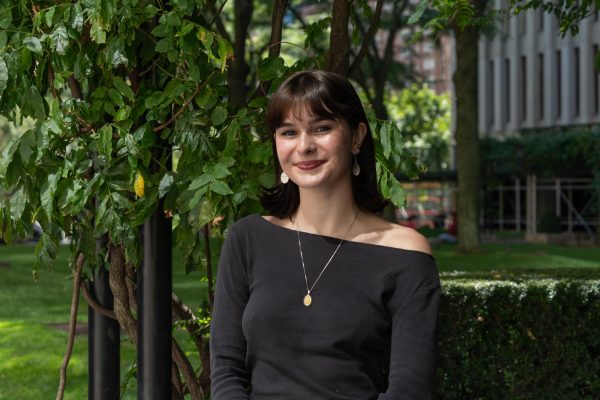On Wednesday, April 10, The Bard Graduate Center, located in Manhattan’s Upper West Side, presented a trio of works by Indigenous weaver Meghann O’Brien in a pop-up installation and lecture entitled “Everyone Says I Look Like My Mother.”
O’Brien is a Northwest Coast weaver of Kwakwaka’wakw, Haida and Irish descent, hailing from Alert Bay, British Columbia. She is also known by the name Jaad Kuujus, or “Deer Woman” in the Haida language, which she inherited from her maternal grandmother. O’Brien was joined by a panel of five other speakers who offered nuanced contributions to the conversation. The panel included Indigenous artist Andy Everson; design researcher Doenja Oogjes; writer, researcher and media professor Kate Hennessy; professor and scholar Hannah Turner; and interdisciplinary scholar and Native American Art Curator Laura J. Allen.
The three works were described as a “genealogy of sorts” by Allen, representative of the trans-generational work of indigenous weavers.
The installation featured three multimedia works — first, “Sky Blanket,” a gorgeous black and white robe, carefully decorated with complex patterns and varying textures. The robe has three stacked faces woven into the center, resembling a totem pole, and layered fringe decoration at the bottom. Completed by O’Brien a decade ago in 2014, “Sky Blanket” was woven over the course of two years in collaboration with two First Nations (a term used to identify indigenous Canadians who are neither Inuit or Métis) artists Jay Simeon and Everson, who also spoke at the event.
“Wrapped in the Cloud,” a digital re-animation of “Sky Blanket,” was 3D-modeled based on the underlying structure of the robe. The replication occurred to allow the original piece to be in “two places at once” due to “Sky Blanket’s” extreme popularity and demand for it to appear in cities and museums across Canada and the United States, O’Brien explained. The final piece, “Untitled,” was created using a TC2 loom, a digital weaving device that rematerialized “Sky Blanket” as a new robe.
The three works were described as a “genealogy of sorts” by Allen, representative of the trans-generational work of indigenous weavers.
“We started using terms like ‘descendant works of art’, because as it has unfolded from the original piece. I feel that the spirit (of “Sky Blanket”) has been carried to new works,” O’Brien said.
“Sky Blanket” features three “ancestor faces” which represent “the past, present and future: ancestors, their living descendants, and those yet to be born,” according to an article O’Brien wrote about the piece on her website.
“The connection of the masks represents visual communication between generations, and conveys how we are connected through art. They are simultaneously also representatives of the Earth, Ocean, and Sky ancestors,” O’Brien continued.
O’Brien left behind a career in professional snowboarding and began working as a full-time weaver in 2010, and practices traditional weaving techniques known as Yeil Koowu (Raven’s Tail) and Naaxiin (Chilkat). Through these art forms, O’Brien “creates a continuity between herself and her ancestors” according to the Bard Graduate Center website.
A student of master weavers Kerri Dick, Sherri Dick and William White, O’Brien makes traditional weaving styles her own with “Sky Blanket.”
“In traditional Naaxiin weaving the design elements are a solid color. The thin outline of the faces I have done instead represent bones of the ancestors, or the skeleton of the art form. Our bones are a permanent record of our bodies having lived and been here … Bones are where our blood is created, and therefore I see them as strongly connected to lineage,” O’Brien said.
The bottom face woven on “Sky Blanket” is decorated with vertical lines inspired by the traditional face paint worn during ceremony, and are a “stylized representation of the Pleiades constellation, where oral history tells we originated,” O’Brien explained.
“Sky Blanket” and its accompanying works both capture and transcend tradition, creating a space to honor indigenous culture across time, space and generations. You can find more information about O’Brien, along with other panel speakers, and find similar events at the Bard Graduate Center website.


